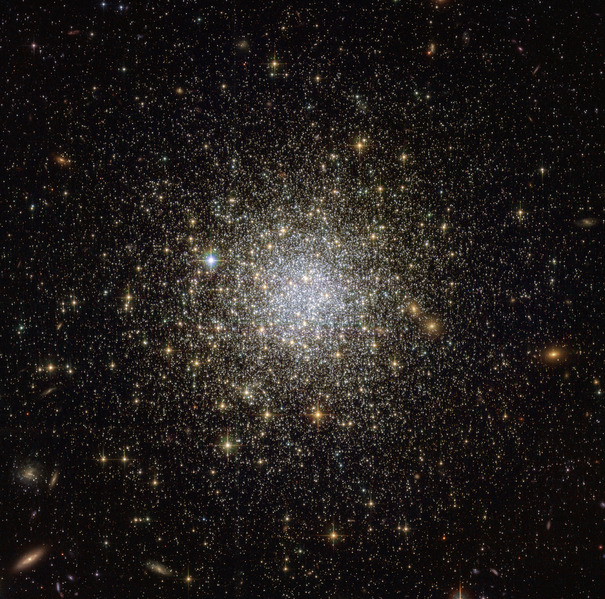Archivo: NGC1466 - HST - Potw1852a

Descripción: Climbing the cosmic distance ladder This image from the NASA/ESA Hubble Space Telescope reveals an ancient, glimmering ball of stars called NGC 1466. It is a globular cluster — a gathering of stars all held together by gravity — that is slowly moving through space on the outskirts of the Large Magellanic Cloud, one of our closest galactic neighbours. NGC 1466 certainly is one for extremes. It has a mass equivalent to roughly 140 000 Suns and an age of around 13.1 billion years, making it almost as old as the Universe itself. This fossil-like relic from the early Universe lies some 160 000 light-years away from us. Nestled within this ancient time capsule are 49 known RR Lyrae variable stars, which are indispensable tools for measuring distances in the Universe. These variable stars have well-defined luminosities, meaning that astronomers know the total amount of energy they emit. By comparing this known luminosity to how bright the stars appear in the sky, their distance can be easily calculated. Astronomical objects such as this are known as standard candles, and are fundamental to the so-called cosmic distance ladder. Credit: ESA/Hubble & NASA
Título: NGC1466 - HST - Potw1852a
Créditos: https://www.spacetelescope.org/images/potw1852a/
Autor(a): Credit: ESA/Hubble & NASA
Términos de Uso: Creative Commons Attribution 4.0
Licencia: CC BY 4.0
Enlace de Licencia: https://creativecommons.org/licenses/by/4.0
¿Se exige la atribución?: Sí
Usos del archivo
La siguiente página enlaza a este archivo:

